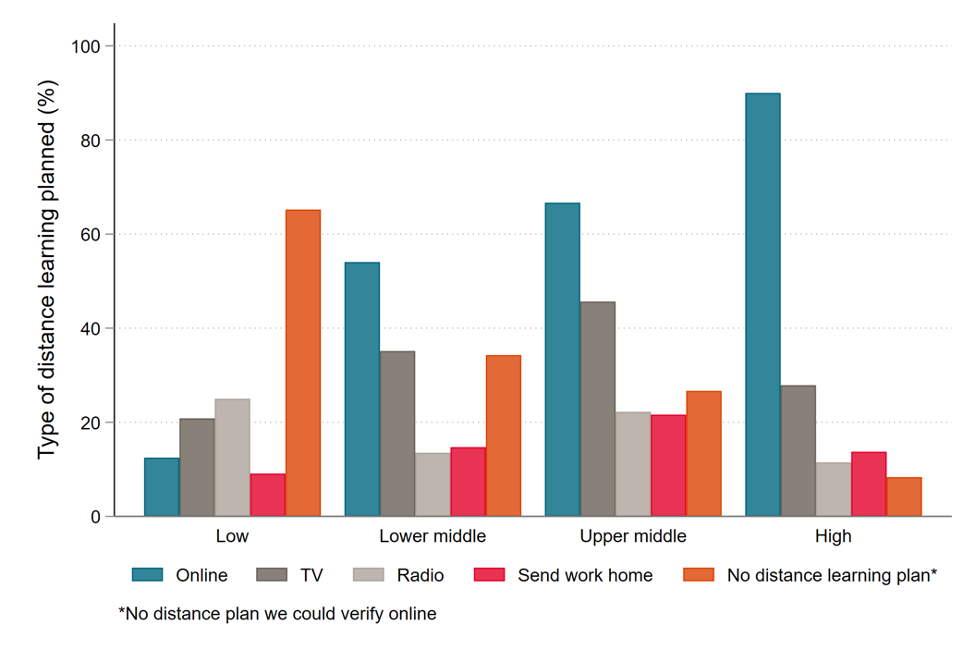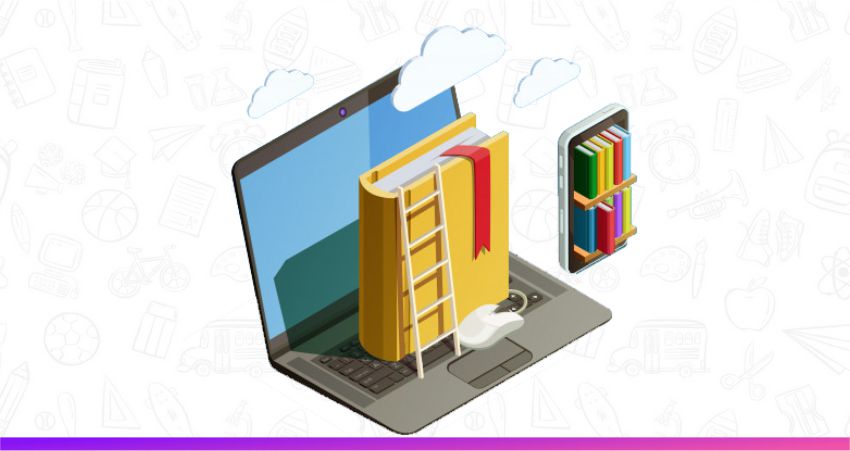What Is The Future Of Online Learning?
By orchidadmin |
Date 08-08-2024

Table of Contents
Admissions Open for
With the progress in technology, many institutions have taken to online learning. Learning online has never been easier, from PhDs to conferences to certificates and everything in between; there’s a whole world out there.
Whether it’s the school in your city or your dream foreign university, online learning is widely available, with the added convenience of a learning experience tailored to your schedule. With e-learning, you have courses in nearly every subject and flexible timelines to suit your schedule and lifestyle. This has given e-learning an upper hand, and students are increasingly turning to virtual learning as a viable alternative to on-campus study. E-learning technologies are continually improving, and now, while students study online can watch lectures, socialize with classmates, and participate in discussions.
There is deliberation regarding online learning requiring a greater degree of self-motivation; recognizing this, institutions take care to make sure students receive similar support as they do on campus.
Anyone who uses e-learning will likely tell you how convenient and impactful it is. Today’s world is an ‘always on’ world, and virtual learning for kids fits right in! In India alone, the online learning market is going to be worth INR 360 billion by 2024.

Online education is the future; discover everything you need to know, like e-learning, types of e-learning, and many more!
What Is Online learning
Online Learning or electronic learning is the delivery of learning and training with the help of electronic resources. While it’s a formal method of learning, it’s provided through electronic devices such as tabs, computers and, mobile phones with internet connectivity. If you have a device handy with stable internet, you can learn from anywhere at any time with barely any restrictions.
Types Of online Learning:
e-Learning is the delivery of learning with the help of electronic resources. While it’s a formal learning method, it’s provided through electronic devices such as tabs, computers, and mobile phones with internet connectivity. If you have a device handy with stable internet, you can learn from anywhere at any time with barely any restrictions.
With e-learning technologies at your fingertips, you have access to a plethora of tools that fulfill modern-day learners’ needs.
As a teacher or student, various sound instructional design principles can employ to train learners.
Fundamentally, there are two categories of eLearning:
- Synchronous
- Asynchronous
Depending on the learner’s needs, objectives, and keeping in mind the available technologies choose the type that best suits the learner’s needs.
1. Synchronous learning
This form of learning is real-time, where both the teacher and the learner are online and interact simultaneously from a different place. The teacher can deliver, and the learner can receive resources through various mediums like chat, video, live webcasting, virtual classrooms, etc. There is constant interaction, and all the parties involved can share their ideas, get queries and solutions and, interact with each other. Synchronous sessions aid e-learners to feel more like participants rather than isolates. This is an already established method that people follow today.
2. Asynchronous learning
This form of e-learning is time-independent; it’s the pause-and-resume kind of learning. The learner and teacher aren’t online at the same time; online learning takes place at any time. The best example for better understanding is a self-study course in a CD, blog, email, DVD, discussion board, etc. A learner can download the documents and learn at their own pace. Some people prefer asynchronous learning more than synchronous learning owing to the convenience of learning at any given time without learning hampering daily commitments.
Benefits Of Online Learning:

In a scenario such as today, with the pandemic shutting down educational institutions, the only way forward is online learning.
Would you have ever thought that the shift from classroom teaching to virtual teaching, notebooks to iPads and, homework to online assessments is more of a boon?
As with many other facets, with education, too digital is the way forward. That being said, besides getting a chance to study being cooped up in your bed or having to wake up just a few minutes before your class, have a look at a few other perks of eLearning.
1. Provides easy accessibility.
One of the significant advantages of online learning is the accessibility factor. Today, you have endless choices when it comes to apps and platforms to cherry-pick from. If you opt for learning outside of your educational institution, you don’t have to go through the entire inquiry process, filling forms, and waiting for admission. You can find a class you like, read all the details, and if it appeals to you, sign up.
2. Online learning is super cost-effective.
It gives the teachers the convenience of conducting classes anytime and from anywhere, while the students can access these classes from wherever they are! This method involves a lot of cost-saving in real estate, travel, accommodation, venue, materials, etc.
3. Online learning is more engaging.
Most students prefer watching videos or listening to podcasts and retaining a lot more information that the media provides. Reading textbooks and lengthy manuals is not very exciting for most. E-learning tools can make teaching quite interesting with the application of tools that allows the inclusion of graphics, videos, etc., in their teaching sessions. The more engaging the information, the better the retention and recall in students.
4. Online learning causes consistency in teaching.
You usually see that when a teacher takes classes for multiple batches of students, there are some additions or subtractions in the information they convey or lessons taught by the teacher going from one class to the other. This is a common, unavoidable human attribute, overcome easily through online learning. The classes can be recorded and replayed for multiple students’ batches, ensuring that the teacher communicates the same information to every batch.
5. E– learning is scalable.
All you need for online learning is a laptop or computer and an internet connection. That is available in every nook and corner of the world these days. Anyone from any part of the world can access the same content as you are right now. Thus, a single educational video can be used to teach an infinite number of students, as opposed to just a class of 40 or 50 students attending the same class physically.
6. It can provide personalized content
Online learning provides personalized content to every individual student, enabling them to choose their own goals and the path to navigate through towards those goals.
Students get to choose what they learn and when they learn it, also allowing them to revise through the content as many times as may be required.
7. Online learning provide superior resource allocation.
Having all the content and lessons on an online platform allows access to an infinite amount of information that can be pulled up within fractions of seconds. For example, links, videos, files, etc., are accessible instantly to gain further in-depth knowledge of the particular topic being taught for children learning.
8. Online learning tools
It help do away with any other operational inefficiencies that could otherwise take place in the scheduling and delivery of content to the students. These behind-the-scenes jobs are usually tedious and time-consuming. These online machines and tools can easily handle with no confusion or hassle and usually with no errors.
9. Online classes continue during a lockdown as well.
Even when a deadly pandemic forces humans to stay locked indoors with no definite time of release in sight, schools, colleges and, even organizations can use e-learning technologies to conduct their classes.
Conclusion
With the fast-evolving ecosystem in technology and the internet, humans have adapted to software and online tools for even the most basic daily needs. There is a certain level of dependency instilled in every human for these tools and applications now. E-learning, too, has quickly jumped onto the bandwagon of the IoT to become a successful part of this ecosystem. The vast array of benefits that come along with adapting to these online learning techniques has made it a very popular technique of teaching in most schools, colleges, and organizations.
Also Read,
Overcoming the Challenges of Remote Learning: Explore the challenges of remote learning, from the digital divide to student engagement.
Other Related Sections
NCERT Solutions | Sample Papers | CBSE SYLLABUS| Calculators | Converters | Stories For Kids | Poems for Kids| Learning Concepts | Practice Worksheets | Formulas | Blogs | Parent Resource
CBSE Schools In Popular Cities
- CBSE Schools in Bangalore
- CBSE Schools in Mumbai
- CBSE Schools in Pune
- CBSE Schools in Hyderabad
- CBSE Schools in Chennai
- CBSE Schools in Gurgaon
- CBSE Schools in Kolkata
- CBSE Schools in Indore
- CBSE Schools in Sonipat
- CBSE Schools in Delhi
- CBSE Schools in Rohtak
- CBSE Schools in Bhopal
- CBSE Schools in Aurangabad
- CBSE Schools in Jabalpur
- CBSE Schools in Jaipur
- CBSE Schools in Jodhpur
- CBSE Schools in Nagpur
- CBSE Schools in Ahmednagar
- CBSE School In Tumkur

Call Us to know more about Orchids
Swipe Up

















